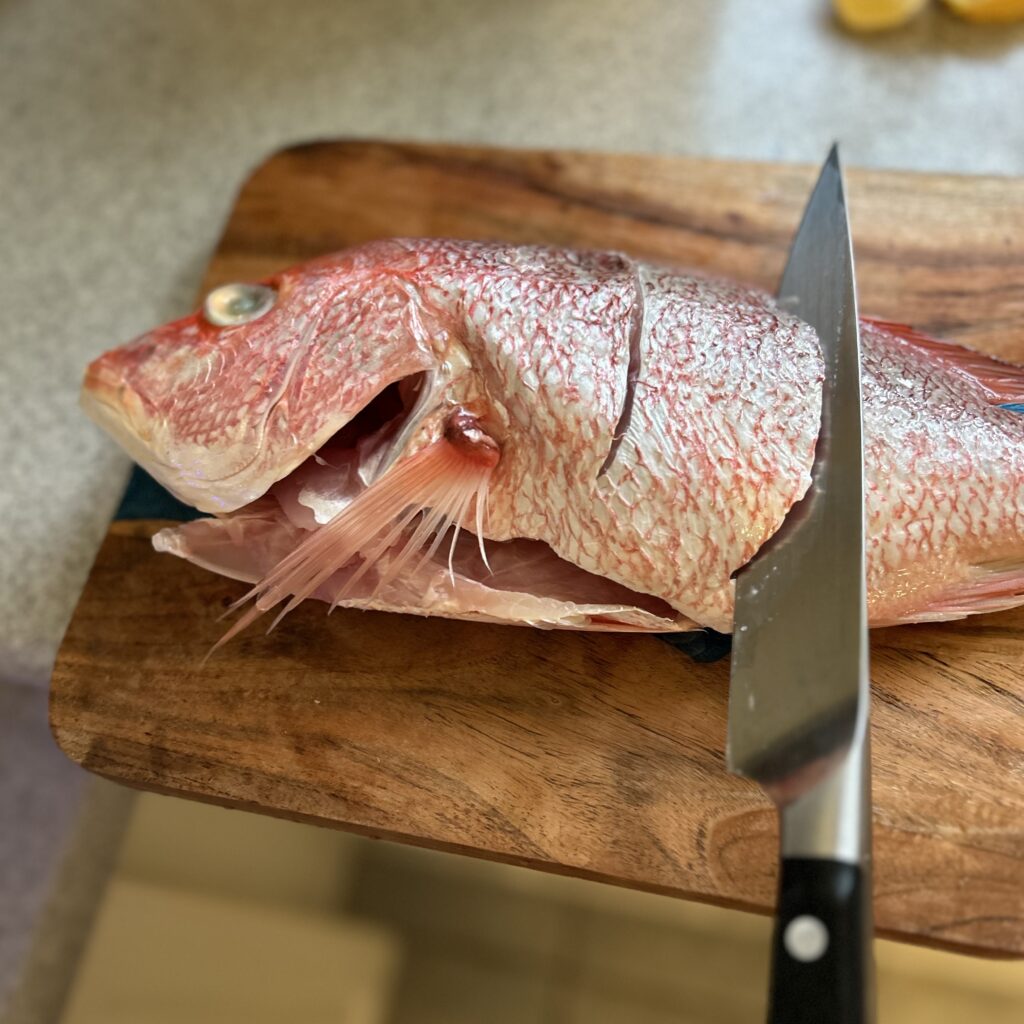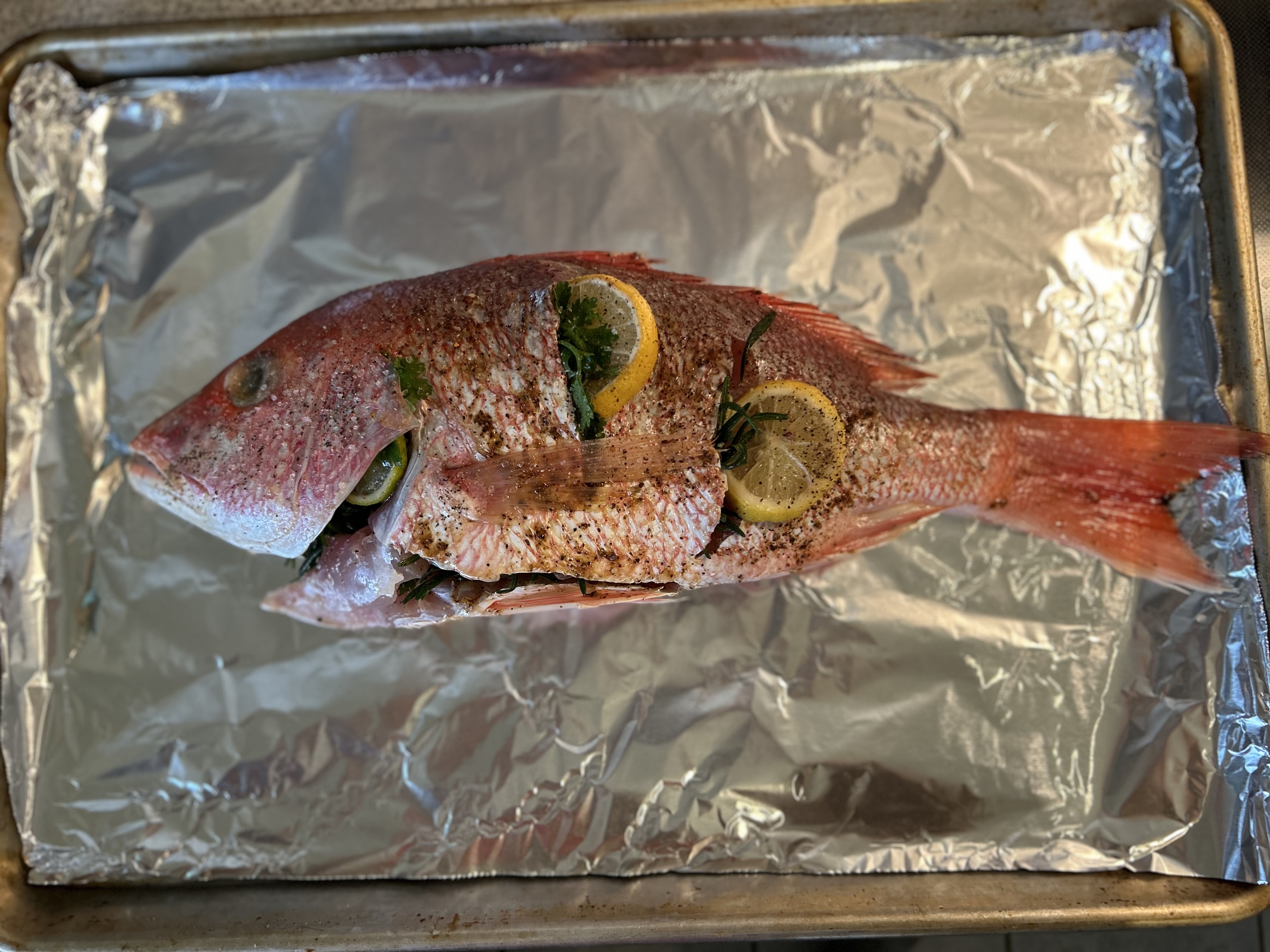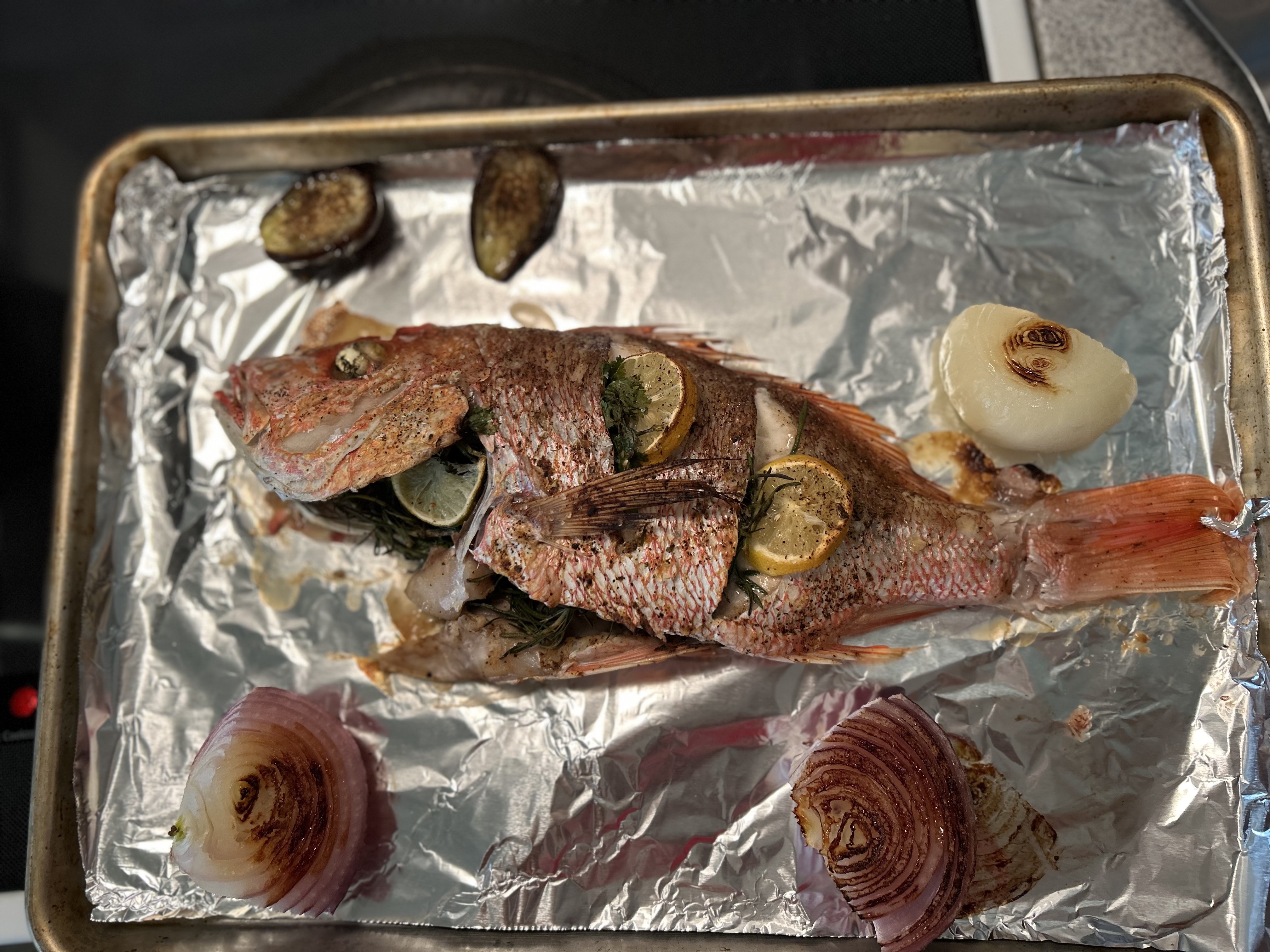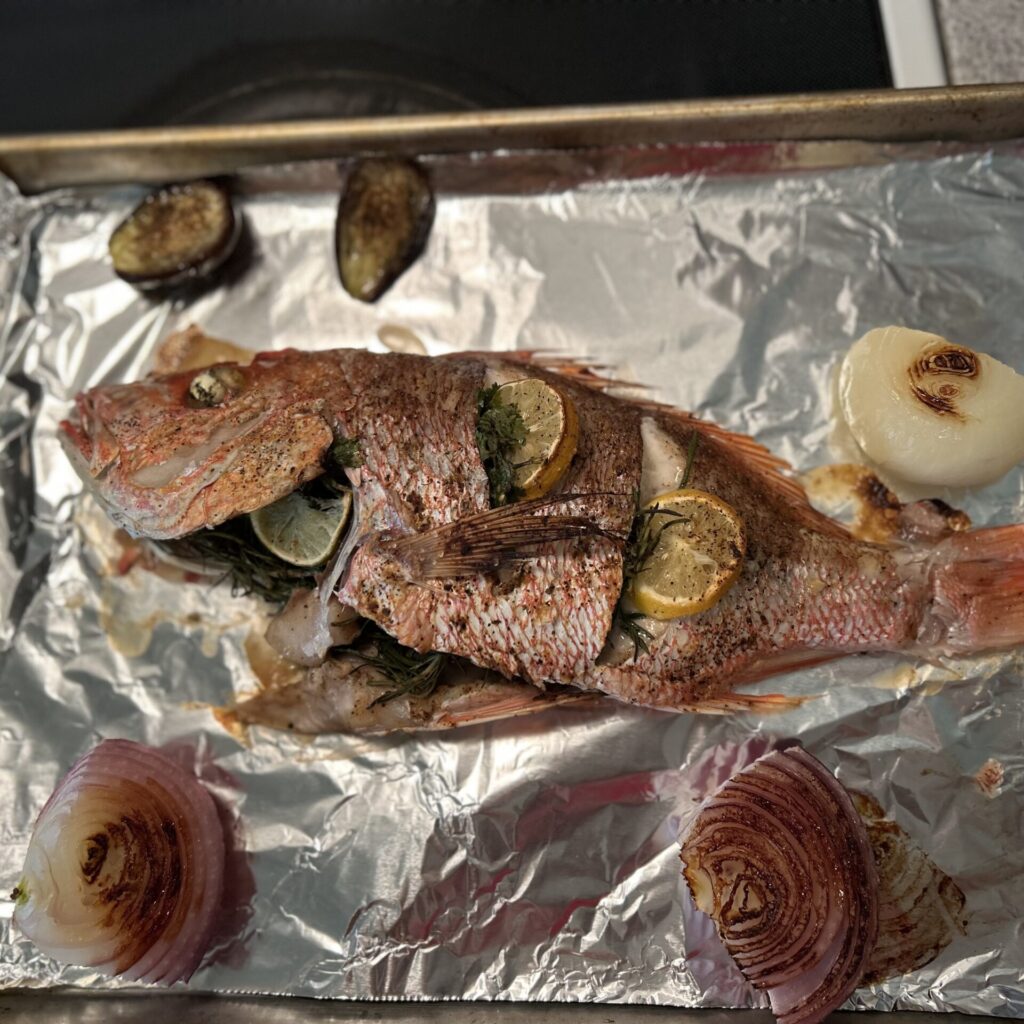Ingredients:
- Whole fish (cleaned and scaled): white fleshed fish such as mahi mahi, bass, red snapper, tilapia or branzino
- Olive oil
- Salt and pepper
- Chile ancho mix (optional)
- Fresh herbs (such as parsley, thyme, cilantro or rosemary)
- Lemon sliced
- Garlic cloves (minced)
Instructions:
- Preheat your oven to 450°F (190°C). Make sure the oven is fully heated before placing the fish inside.
- Rinse the fish thoroughly under cold water and pat it dry with paper towels. Transfer it to a foil lined baking sheet or roasting pan.
- Score the fish if the fish counter didn’t do this for you using a knife to cut slits about an inch apart at the front of the fish.
- Brush the fish inside and out with olive oil on both sides. This helps crisp up the skin and prevent sticking.
- Season the inside and outside of the fish generously with the dry spices (salt, pepper, chile ancho red spice).
- Stuff the cavity of the fish with fresh herbs, lemon slices, and minced garlic cloves for added flavor. Add sea salt, cracked pepper and garlic powder to the outside of the fish.
- Roast in the preheated oven for about 15-20 minutes per pound (450g) or until the internal temperature at the thickest part of the fish reaches 145°F (63°C).
- Check for doneness by gently pulling on the dorsal fin; if it comes out easily, the fish is done. Cooking times can vary based on the size and type of fish, so keep an eye on it and use a meat thermometer to ensure it’s cooked to the proper temperature.
Nutrition Facts (Approximate, per serving):
- Serving Size: 3 oz of fish
- Calories: around 100-120 kcal
- Protein: approximately 20-25 grams
- Total Fat: about 3-5 grams
- Saturated Fat: around 1-2 grams
- Unsaturated Fat: around 2-3 grams
- Cholesterol: around 40-60 mg
- Sodium: around 50-70 mg
- Carbohydrates: 0 grams (negligible)
- Fiber: 0 grams
- Sugars: 0 grams
Why is Roasting Fish Better Than Frying It?
- Less Added Fat:
- Roasting typically requires less added fat compared to frying. While roasting might involve a light coating of oil for flavor and to prevent sticking, deep frying usually involves submerging the food in a significant amount of oil, leading to higher calorie and fat content.
- Preservation of Nutrients:
- Roasting generally preserves more of the fish’s natural nutrients compared to deep frying. The high temperatures and longer cooking times associated with frying can lead to nutrient loss, especially for heat-sensitive vitamins and omega-3 fatty acids.
- Lower Calorie Content:
- Roasting results in a lower calorie content compared to deep frying. The excess oil absorbed during frying significantly contributes to the overall calorie count, making roasted fish a better option for those looking to manage their calorie intake.
- Reduced Formation of Harmful Compounds:
- Deep frying at high temperatures can lead to the formation of potentially harmful compounds, such as acrylamide and advanced glycation end products (AGEs).
- Crispy Texture with Less Oil:
- While frying can produce a crispy texture, roasting can also achieve a desirable texture with less oil. Using techniques such as preheating the oven and ensuring the fish is properly dried before roasting can result in a crisp exterior without excessive oil.
- Easier Cleanup:
- Roasting is generally a simpler and cleaner cooking method compared to frying, which can involve hot oil splatters and the need for larger amounts of oil. This can make the overall cooking and cleanup process more convenient.
- Health Benefits:
- Regular consumption of fish is associated with a reduced risk of heart disease. Omega-3 fatty acids help lower blood triglycerides, reduce inflammation, improve blood vessel function, and lower blood pressure. Fish is rich in various vitamins and minerals, including vitamin D, vitamin B12, iodine, selenium, and zinc. These nutrients play essential roles in bone health, immune function, and overall well-being. In addition, fish is a lean protein source that can be beneficial for weight management. It provides satiety and helps maintain muscle mass while being lower in saturated fat compared to some meat sources.






